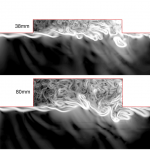Cobalt V8.0 Released
Cobalt Solutions, LLC is pleased to announce the release of Cobalt V8.0. Several of the enhancements are listed below:
- Addition of the Quadratic Constitutive Relation (QCR) for Spalart-Allmaras turbulence models.
- Addition of the 2-D User Data boundary condition. This allows the user to specify variation of variables on a plane which is used to determine the boundary condition.
- Modification to the for the User-Coded boundary condition to pass additional variables.
- Modification to the Grid Deformer interface to load a grid deformer as a run-time library.
- General improvements in the overall algorithm.
For more information and download instructions, please contact support.








